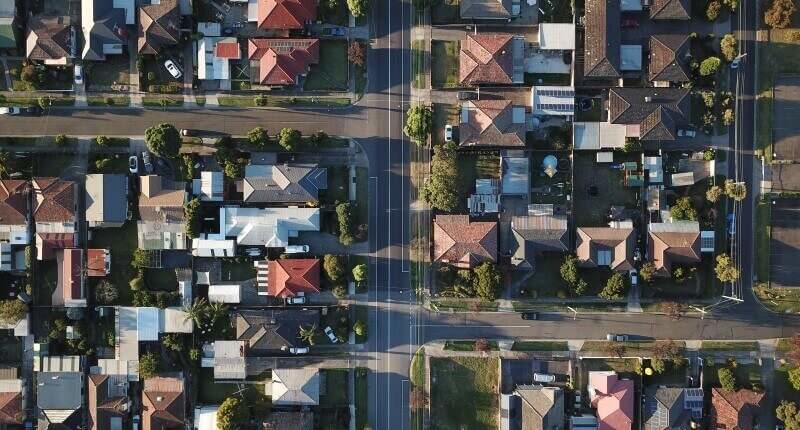- The fundamentals remain positive for residential despite some negative headlines
- Select commercial property could be a standout performer
- Housing affordability will be a key political issue in 2023
Oh my gosh, is that the time already? I just looked up from my harried work desk and realised…. 2023 is upon us!
It feels like 2022 progressed far faster than the previous few.
Perhaps it’s the PTSD of pandemic shutdowns when we had too much time on our hands. Now it’s all work fast, hit targets and don’t take a backward step because you never know what the future might bring!
Anyway, with 2023 coming down the turnpike, I want to share my thoughts on the year ahead. I feel a bit like a lousy property market Santa Claus, not so much delivering on your wishes, but rather saying you had better not cry because this is simply the way things are.
On that cheery note, here are my expectations for the coming year.
The big picture
First up, some sobering news. I expect property values more broadly to continue softening through until the middle of 2023. Confidence among buyers isn’t great at present so they will remain cautious about making offers and moving forward on purchases.
Of course, all eyes will be on inflation to see how effective interest rate rises have been. Moves to increase the cash rate in 2022 will reveal their full impact in the 2023 numbers. While our domestic inflation figure remains elevated, there are signs that costs are pulling back overseas – so that’s some good news at least.
Market sentiment is likely to turn positive very quickly once the RBA suggests interest rate cuts are on the cards (probably somewhere towards the end of 2023 based on current metrics).
Investors with their fingers on the pulse will do well if they acquire property before that occurs.
Underlying fundamentals suggest to me that property values will rise again come late 2013/early 2024.
The influences
I’m not talking about my incredible Instagram and Tik Tok accounts. That would be influencers, not influences.
Here are some key levers that I believe will drive property market direction in 2023.
The first is international immigration which should ramp up demand for housing. Look at the prime minister’s bullish announcement during the Jobs and Skills Summit in 2022 and you’ll get the idea. Add to that figure the natural egress from students, long-stay holiday makers and family immigrants, and we could potentially see 180,000 to 200,000 more people coming to our shores each year.
Now, consider the decrease in construction activity that we’ve seen going into the end of this year. Supply of new housing is tightening as a result.
Guess what happens when demand rises and supply falls? That’s right – values increase.
We’re already under tight accommodation conditions. We’ve seen extreme levels of rental vacancy in 2022 particularly in and around capital city CBDs. I’d expect tenants in these locations who are looking for a rental will continue to struggle .
I also believe affordability will be a key market driver this year. We’ve seen huge interstate migration to more affordable locations such as south-east Queensland and with borrowing capacities eroded by interest rate and serviceability changes, I’d expect a lot of investor interest to shift from Sydney and Melbourne to other capitals and regional centres.
Piquing my interest
I think there are a couple of key sectors worth watching this year.
Commercial property will continue to steam along in 2023. The yield-chasing investor is well and truly looking at assets which offset the cost of rising interest rates. Well-chosen commercial is delivering this to its owners.
In the residential space, cash flow properties such as dual living, duplex, communal living and boarding houses will grow in popularity too.
As I mentioned, housing affordability – be it buying or renting – will continue to be the hot-button topic. Government moves to boost housing supply via public-private partnerships sound promising, but the logistics will be challenging. Particularly because construction costs and demand for contractors remain strong (despite a recent slowing in activity). In short, I don’t expect a silver-bullet solution coming from any government.
What I hope will be a surprise this year is politicians leaning away from anti-landlord legislation and towards incentivising mum-and-dad investors. This would seem like a no-brainer way to help boost rental supply. My hope is they see the light and start engaging more with investors to help bring about a solution.
My final takeaways
So, looking at the year ahead, I think among the most surprising things is that despite some doom and gloom predictions about the economy and property markets, the fundamentals remain impressive. We’ve got a relatively robust economy at the moment, growing wages, low unemployment, record low rental vacancies, immigration set to rise and all while most homeowners are well ahead on their mortgages.
Heading into early 2023, there will be great buying opportunities in the property market, so for those with the available funds and cashflow, now presents a good time to get active.








